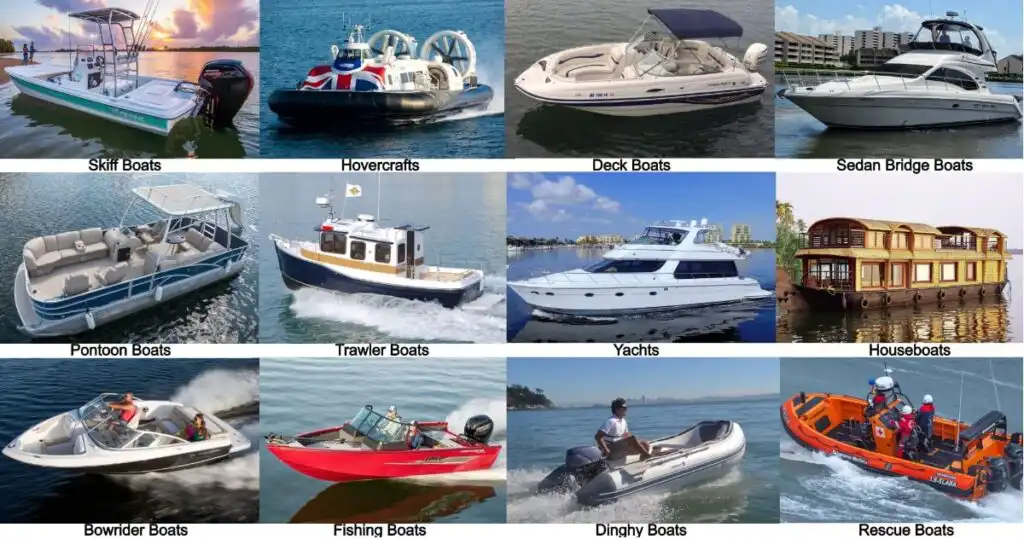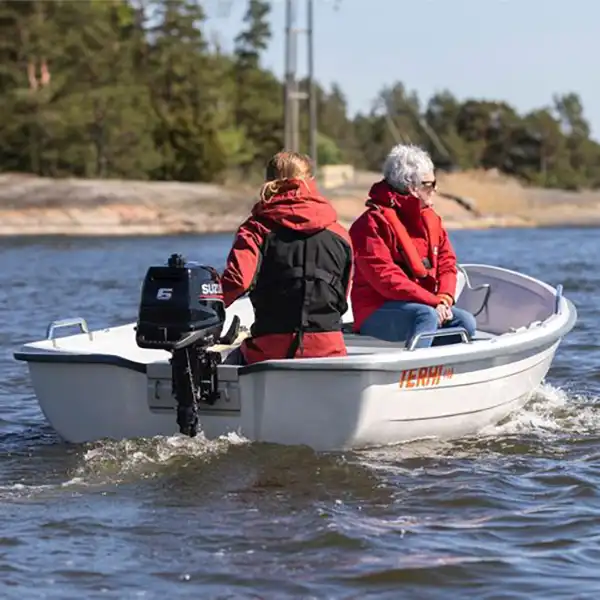As an avid boater and DIY enthusiast, I’ve learned firsthand the crucial role that replacement parts play in maintaining a small boat’s performance and safety. Whether you’re cruising the local lake, fishing in a quiet bay, or racing against the wind, knowing how to care for your boat is essential. Over the years, I’ve faced my share of challenges, from a stubborn engine refusing to start to a leaking hull that turned a day of fun into a frantic scramble for supplies.
In this guide, I’ll share my experiences and insights into the best replacement parts for small boats, along with practical tips and tricks to help you keep your vessel in shipshape condition. Whether you’re a seasoned sailor or just starting your boating journey, these insights will empower you to take charge of your boat’s maintenance like a pro.
Understanding Your Boat
Before diving into replacement parts, it’s essential to understand what type of small boat you have. The term “small boat” encompasses various vessels, including dinghies, fishing boats, sailboats, and more. Each boat type has its own unique components and systems that require attention.
Knowing your boat’s make and model is vital when selecting replacement parts. Not all boats use the same components, and what works for one may not be suitable for another. I once learned this lesson the hard way when I mistakenly purchased a fuel filter that was incompatible with my outboard motor. After some frustrating trial and error, I quickly realized the importance of thorough research before making any purchase.

Common Replacement Parts for Small Boats
Now that you understand your boat better, let’s dive into some of the most common replacement parts you’ll need to keep it running smoothly.
1. Engine Components
The heart of your boat is its engine. Keeping it in optimal condition is crucial for performance. Here are some essential engine components to consider:
- Spark Plugs: These little guys ignite the fuel-air mixture in your engine. Replacing spark plugs regularly can lead to better fuel efficiency and smoother starts. I like to change mine at the beginning of each season.
- Fuel Filters: Dirty fuel filters can lead to engine stalling or poor performance. It’s advisable to replace them at least once a year.
- Oil Filters: Like any vehicle, your boat’s engine needs clean oil to run efficiently. Regular oil and filter changes can extend the life of your engine significantly.

2. Electrical Parts
Your boat’s electrical system keeps everything running, from navigation lights to the bilge pump. Ensure your electrical components are in top shape:
- Batteries: Keeping your batteries charged and maintained is crucial. I recommend investing in a good-quality battery charger and checking the terminals for corrosion regularly.
- Wiring and Fuses: Frayed wires can be a fire hazard. Regularly inspect and replace any damaged wiring, and keep spare fuses on hand for emergencies.
- Switches: Whether it’s the ignition switch or light switches, ensure they are functional. I once had a switch fail mid-voyage, which led to a rather nerve-wracking situation!
3. Hull and Deck
Maintaining your boat’s hull and deck is vital for both aesthetics and safety. Here are some parts to consider:
- Fenders: Protect your boat from damage while docking. Regularly check for wear and tear, and replace them when necessary.
- Cleats and Hatches: Ensure all deck hardware is in good condition. I learned that a loose cleat can lead to a disaster when trying to secure your boat to a dock.
- Seals and Gaskets: These are critical for keeping water out. If you notice any leaks, it may be time to replace the seals around hatches and fittings.
4. Safety Gear
No matter how well your boat is running, safety should always come first. Here are some essential safety items:
- Life Jackets: Regularly check the condition of your life jackets. They should be free of tears and in good working order.
- Flares and Fire Extinguishers: These items can be lifesavers in emergencies. Ensure they are within their expiration dates and easily accessible.

DIY Replacement and Maintenance Tips
Embarking on DIY repairs can be a rewarding experience. Here are some practical steps for common replacements and maintenance tasks.
Replacing a Battery
- Gather Tools: You’ll need a wrench, a battery terminal cleaner, and safety goggles.
- Disconnect: Start by disconnecting the negative terminal first, followed by the positive terminal.
- Remove the Old Battery: Carefully lift the battery out, taking care not to drop it.
- Clean Terminals: Use the terminal cleaner to remove corrosion.
- Install the New Battery: Place the new battery in the same position, reconnecting the positive terminal first.
- Test: Start the engine to ensure everything is functioning correctly.
Tips and Tricks
- Use the Right Tools: Investing in quality tools can make all the difference in the ease of repairs.
- Keep a Checklist: Maintain a list of parts that need to be replaced or inspected regularly. This will help you stay organized and proactive.
- Join a Community: Connect with other boaters. Sharing experiences and tips can provide valuable insights.

Where to Buy Replacement Parts
Finding reliable sources for replacement parts can save you time and money. Here are some of my go-to places, including a fantastic option specifically for electronic parts:
- MY-IVVI eParts: If you’re looking for high-quality electronic components for your small boat, MY-IVVI eParts is an excellent resource. They specialize in a wide range of replacement electronic parts and accessories, ensuring you get the best quality for your needs. Their user-friendly website makes it easy to find exactly what you’re looking for, and their customer support is top-notch. Whether you need batteries, switches, or wiring, you can trust MY-IVVI eParts to deliver.
- Online Retailers: Websites like West Marine, Amazon, and Marine Depot offer a wide range of parts. Always read reviews before making a purchase to ensure quality.
- Local Marine Supply Stores: These are great for hands-on assistance and advice. The staff often has extensive experience and can recommend the best parts for your specific boat.
- Second-Hand Marketplaces: Check out platforms like eBay or Craigslist for used parts. Just be cautious and inspect items thoroughly before buying.
When choosing between new and used parts, consider the critical nature of the component. For safety gear, I always recommend buying new, but for non-critical items, used parts can be a good option if they’re in good condition.

Final Thoughts and Encouragement
Maintaining your small boat doesn’t have to be daunting. With the right knowledge and tools, you can keep your vessel in top shape and enjoy countless adventures on the water. Embrace the process of learning and repairing—it can be incredibly rewarding!
Remember, every boat owner has a unique journey filled with lessons learned. I encourage you to share your experiences and tips in the comments below. Happy boating, and may your sails always be full!

